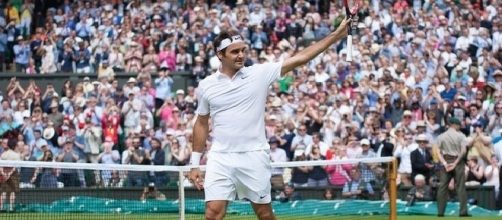Roger Federer defeated Marat Safin in the final of the 2004 Australian Open on Sunday, February 1st. A day later when the rankings updated the Swiss Maestro became the new World No. 1. It was the first week of his career that Federer would hold the top spot on tour. However, it certainly wouldn't be the last as Federer would hold the ranking for the next 237 consecutive weeks. Furthermore, he would also go on to break Pete Sampras' record for most cumulative weeks as the guy in the top spot.
Recapping Federer's 2004 Australian Open
The 2004 Australian Open certainly wasn't a difficult draw for Roger Federer.
He only dropped two sets in the entire tournament and none after the quarterfinals. With an early-round draw against no one in the Top 100, Federer didn't face a remotely tough player until the fourth round. At that point, Federer drew Australian hopeful Lleyton Hewitt.
At this point in Federer's draw, there was a point when his fortunes seemed to turn around. Federer lost the first set to Hewitt. However, the Federer/Hewitt match-up was one that the Swiss would come to dominate. He turned things around in the round of 16 at the 2004 aussie, eliminating Hewitt 4-6, 6-3, 6-0, 6-4.
Federer had to beat Nalbandian
In the quarters, Federer bumped into his boogeyman, David Nalbandian. In the early stages of both players' careers, the Argentine enjoyed some success against Federer.
Nalbandian had won the first five matches in their head-to-head series, and many picked him as the future of men's tennis. That Nalbandian had defeated Federer at 2003 Australian Open and the 2003 US Open was as good a reason as any to pick the Argentine to beat Fed again at the 2004 Aussie. After all, Nalbandian had beaten Federer in the two most recent hard-court Grand Slams.
However, Federer had turned the tables at the 2003 Masters Cup, thrashing Nalbandian 6-3, 6-0. Federer would win in the Aussie quarters against his nemesis and go on to beat both Juan Carlos Ferrero and then Safin to claim the title. At that time in tennis history, it was Andy Roddick that was ranked No. 1 at the age of 21.
The late January 2004 rankings were the last ones that saw Roddick on top of the world. Federer would not yield top spot again until August 18th, 2008 when Rafael Nadal took over for about a year.
2017 is much different in many ways for Federer. Injuries are more common and questions about whether he can put an entire season together are valid. However, Federer is still winning the big tournaments as he defeated Nadal in the final of the 2017 Australian Open. That is a perfect start to the season for Federer and, with 2000 ranking points bagged for the calendar year ahead, Federer may compete for the top spot again on tour yet.

